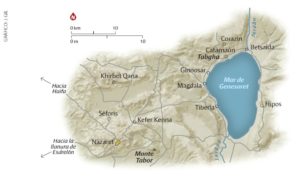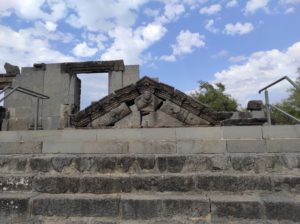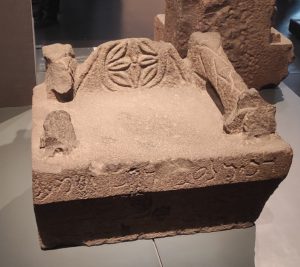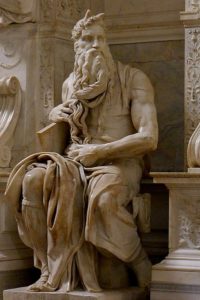“Woe unto thee, Chorazin! woe unto thee, Bethsaida!…”(Mt 11:21).

Map of Chorazin Footprints of Our Faith
With these harsh words, Jesus condemns the hardness of heart and lack of faith of two cities in which he undertook the first phase of his public ministry. Returning to Galilee with his disciples after being baptized, Jesus chooses Capernaum, a small village on the northern shore of Lake Gennesaret, as the base from which to spread his preaching. Early on, we see him enter the synagogues of the towns neighboring Capernaum. Bethsaida and Chorazin belong to this first circle in the immediate surroundings of Capernaum. They were the first cities to hear the message of salvation brought by Jesus, but they failed to welcome it.
Archaeological excavations in the 1960s uncovered in Chorazin the remains of an ancient synagogue, dating back to the 4th and 5th centuries. It is several centuries after the preaching of Jesus in Galilee; but bearing in mind the great continuity of occupation of the sacred places, archaeologists conclude that it could have been built on the remains of the synagogue that Jesus visited while wandering through the region.
It is striking that, while the rest of Palestine was filled with Christian basilicas and sanctuaries, the Jewish villages around the Lake experienced an intense building activity in richly decorated synagogues. The Jewish architects reused several decorative elements found in pagan temples of the surrounding areas. In the case of Chorazin, for example, a medusa head adorned the facade of the synagogue.

Medusa, front and portico in Chorazin
Of all the archaeological finds, the most outstanding turns out to be a square stone, carved in black volcanic rock, typical of the Lake region. It bears a dedicatory inscription in Aramaic, in honor of a generous community benefactor named Yudan, son of Ishmael. Located just to the right of the holy ark – a kind of cabinet containing the scrolls of the Law – this stone undoubtedly had a special sacred value. This led scholars to believe that it was the “Chair of Moses”, a ceremonial chair symbolizing the authority of the one who passed on the Law of God to the people of Israel.

The Chair of Moses. Israel Museum
On one occasion, Jesus referred to this chair:
“The Scribes and the Pharisees have taken their seat on the Chair of Moses, therefore, do and observe all things whatsoever they tell you, but do not follow their example; for they preach, but they do not practice.” (Matthew 23:2-3)
With these words Jesus affirms that the Pharisees represent the orthodox doctrine in the Judaism of his time, even if their deeds do not back up their words. Unlike the Sadducees, Pharisees believed in the resurrection of the flesh and in angels.
After the destruction of the Temple of Jerusalem in 70 A.D., the rabbis took up the inheritance of the doctrine of the Pharisees. To make up for the absence of worship, the rabbis contributed to the birth of a Judaism in which the reading of the Law replaced the sacrifices. Thus, the synagogue became the center of this new Judaism. From a simple congregation hall in which the Law was read, the synagogue was transformed into a house of prayer, a space for a more internalized worship than the Temple ceremonies; to such an extent that the Talmud describes it as a miqdash me’at, that is, a “small temple” (Megillah 29a).
As a symbol of this new focus on the reading of the Law, an empty chair representing the authority of Moses was added in some synagogues of the Holy Land, such as that of Chorazin: the Chair of Moses. Perhaps the Renaissance sculptor Michelangelo had this chair in mind when he sculpted his famous Moses, seated with the tablets of the Law resting on his knee.
By Henri Gourinard

Moses. Michelangelo
